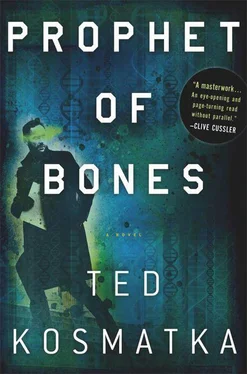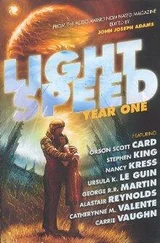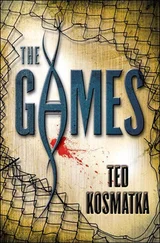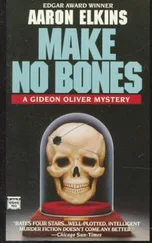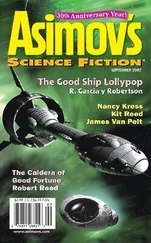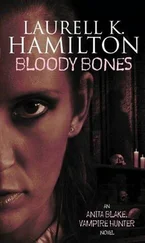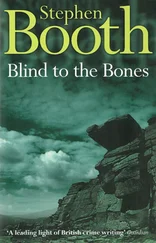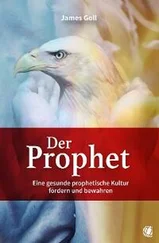The procedure took nearly seven hours. He coated the bone surface with sodium hyperchlorate, then used a Dremel tool to access the unexposed interior matrix. He snapped two dozen photographs, careful to record the stratigraphic context. Later it would be important to keep track of which samples came from which specimens. Whoever these things were, they were small. He sealed the DNA samples into small, sterile lozenges for transport.
It was night when he climbed from under the tarp.
Outside the cave, Gavin was the first to find him in the firelight. “Are you finished?”
“For tonight. I have six different samples from at least two different individuals.”
“Yeah, that’s what we thought, two individuals. So far.”
“So far?”
“We’re not sure how far down the cache goes. When we remove those bones, there could be more underneath.”
“Is that common here?”
Gavin shrugged. “It’s unpredictable. The deposits will go shy on you sometimes. You’ll have a dozen feet of nothing, just sterile soil, and then you’ll brush away the next centimeter and the dig will go active for another dozen feet: rat bones, and bird, and charcoal, and stone tools. Even Stegodon, a kind of pygmy elephant. Sometimes more interesting things.”
“I’d say those bones were interesting,” Paul said.
“So that means you’ll stay on with us?”
“Yeah,” Paul said. “I’ll stay.”
* * *
Gavin handed him a bottle of whiskey.
“Isn’t it a little early to celebrate?”
“Celebrate? You’ve been working in a grave all day. Don’t they drink at wakes in America?”
That night, around the campfire, Paul listened to the jungle sounds and to the voices of scientists, feeling history congeal around him.
“Suppose it isn’t,” Jack was saying. Jack was thin and American and very drunk. “Suppose it isn’t in the same lineage with us, then what would that mean?”
The red-bearded herpetologist groaned. His name was James. “Not more of that dogma-of-descent bullshit,” he said.
“Then what is it?” someone asked.
They passed the bottle around, eyes occasionally drifting to Paul like he was a priest come to grant absolution, his sample kit just an artifact of priestcraft. Paul swigged from the bottle when it came his way. They’d finished off the whiskey long ago; this was some local brew distilled from rice. Paul swallowed fire.
Yellow-haired man saying, “It’s the truth,” but Paul had missed part of the conversation, and for the first time he realized how drunk they all were; James laughed at something, and the woman with the white shirt turned and said, “Some people have nicknamed it the hobbit.”
“What?”
“Flores man—the hobbit. You know, little people three feet tall.”
“Tolkien would be proud,” a voice contributed.
“A mandible, a complete cranium, segments of a radius, and left inominate.”
“But what is it?”
“It is what it is.”
“Exactly.”
“Hey, are you staying on?”
The question was out there for three seconds before Paul realized it was aimed at him. The woman’s brown eyes were searching across the fire. “Yeah,” he said. “I’m staying.”
Then the voice again, “But what is it?”
“That is the question, isn’t it?”
Paul took another swallow—thinking of the bones and trying to cool the voice of disquiet in his head.
* * *
Paul learned about her during the next couple of days, the woman with the white shirt. Her name was Margaret. She was twenty-eight. Australian. Some fraction aborigine on her mother’s side, but you could only see it for sure in her mouth. The rest of her could have been Dutch, English, whatever. But that full mouth: teeth like Ruteng children’s, teeth like dentists might dream.
She tied her brown hair back from her face, so it didn’t hang in her eyes while she worked in the hole. This was her sixth dig, she told him. “This is the one.” She sat on the stool while Paul took her blood, a delicate index finger extended, red pearl rising to spill her secrets.
“Most archaeologists go a whole lifetime without a big find,” she said. “Maybe you get one. Probably none. But this is the one I get to be a part of.”
“What about the Leakeys?” Paul asked, dabbing her finger with cotton.
“Bah.” She waved at him in mock disgust. “They get extra. Bloody Kennedys of archaeology.”
Despite himself, Paul laughed.
This latest evidence brings us to the so-called dogma of common descent, whereby each species is seen as a unique and individual creation, discrete from all others. Therefore all men, living and dead, are descended from a common one-time creational event. To be outside of this lineage, no matter how similar in appearance, is to be other than man.
—
Journal of Heredity
Bone is a text. It writes its history for those able to read it.
When Paul first started at Westing, he often worked late into the evenings. Many nights in the bone room, he would lay the skeletal remains out carefully on the clean blue felt, articulating the pieces, forming an assemblage. He matched the bones in front of him to the perfect image he held in his head.
But now, as he sat alone at the bottom of Gavin’s pit, he found that no perfect image rose up in his mind. He looked at the bones, and his imagination failed him. The lights cast strange shadows across the phalanx of chalky gray-white material. Heat from the lamp made steam in the damp air. The pit smelled of earth and muck.
Somewhere above him, it was almost morning, just before dawn. In a few minutes, the rest of the camp would wake and the day would start. The team would congregate and climb down into the pit to continue the dig. Paul had woken early, needing one last look at what couldn’t possibly exist.
“What are you?” he whispered into the silence of the pit. He gently blew dust away from the surface of the bone.
Anatomy textbooks say there are 206 bones in the human body, but this is not strictly true. There exists a range of variation. The number of vertebrae in the coccyx, for example, is not fixed in the human species. Some people have more, some less. Also, there exists in some individuals of Mesoamerican ancestry an extra cranial suture. By virtue of its presence, this additional suture creates an additional bone: the Inca bone, which lies at the base of the skull in direct conjugation with the lambdoid suture and the sagittal suture.
In spite of what the Bible says, men and women possess the same number of ribs.
Bone is what remains of us after we’re gone. It’s as close as you can get to a permanent record of our lives.
It was in the silence and austerity of the bone room that Paul first learned that bones can answer you. They can whisper their secrets across a distance of millennia.
Now he adjusted the light. With a latexed hand, he brushed the dirt away. Here was the radius, impossibly small. Like a child’s arm, though beside it rested a portion of tiny jaw—the adult molars already worn smooth.
Bone is made primarily of soft collagen and crystalline calcium phosphate. Although resistant to change and to decay, it is rarely featureless. Bone is the scaffolding on which our lives are slung, and it shows the marks of this interface. The stronger a person is, the more they mark their skeleton. There are foramina, tubercles, grooves, and tuberosities, the raised marks of muscle and ligament attachments. There are signs of trauma and healing, the stresses and strains of our lives, written in bone. And other secrets.
Bone is recycled by the living body. Calcium is laid down and picked up in a repeating pattern of formation and resorption. A never-ending cycle of birth, growth, and senescence. Like nature itself.
Читать дальше
